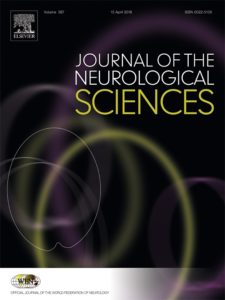Objective
This study investigated the diagnostic and prognostic value of the King-Devick (K-D) test in conjunction with treadmill testing in adolescents after sport-related concussion (SRC) in an outpatient concussion management clinic without baseline measures.
Design
Prospective cohort.
Methods
The K-D test was administered pre- and post-exercise on a graded treadmill test to acutely concussed (AC, <10 days from injury, n = 46, 15.4 ± 2.1 years) participants for 2 clinic visits (1 week apart) and to matched controls (MC, n = 30, 15.8 ± 1.4 years) for 2 visits (1 week apart). Initial K-D test times were compared between MC and AC. Changes in times from pre- to post- exercise during a treadmill test were compared for MC and AC and from Visit 1 to Visit 2. Smooth pursuits and repetitive saccades were compared with initial visit K-D test performance.
Results
Comparison of pre-exercise K-D test times at Visit 1 distinguished MC from AC (46.1 ± 9.2 s vs. 53.7 ± 13.0 s, p = .007). Comparison of pre- and post-exercise K-D test times revealed significant improvements for MC (46.1 ± 9.2 s vs. 43.1 ± 8.5 s, p < .001) and AC who recovered by Visit 2 (Fast Recovery Group [FRG], n = 23, 50.4 ± 10.0 s vs. 47.3 ± 9.8 s, p = .002). No significant difference was seen in pre- and post-exercise K-D test times on Visit 1 for AC who took longer than 2 weeks to recover (Slow Recovery Group [SRG], n = 23, 57.0 ± 15.0 s vs. 56.0 ± 16.3 s, p = .478). At Visit 1, AC had more abnormal smooth pursuits than MC (17% vs. 3%, non-significant, p = .064). AC, however, had significantly more abnormal repetitive saccades than MC (37% vs. 3%, p = .001) and AC with abnormal repetitive saccades took significantly longer to complete the Visit 1 pre-exercise K-D test than AC with normal repetitive saccades (58.6 ± 16.0 s vs 50.8 ± 10.2 s, p = .049).
Conclusion
The study supports utility of the K-D test as part of outpatient concussion assessment. Lack of improvement in K-D test performance after an exercise test may be an indicator of delayed recovery from SRC.
Summary Points
- Comparison of K-D test scores distinguishes healthy controls from acutely concussed adolescents in a clinical setting.
- Lack of improvement on K-D test scores after a standardized exercise protocol indicates delayed recovery from concussion.
- Acutely concussed patients with abnormal saccadic eye movements took longer on initial K-D testing compared to those patients without abnormalities.
- The K-D Test evaluates saccadic eye movements, processing speed and visual tracking.
- Cortical structures, including the frontal eye fields, supplementary eye fields, dorsolateral prefrontal cortex, parietal eye fields, and brainstem areas are involved in saccade generation.
- The incidence of oculomotor abnormalities after SRC is high and presence of these deficits is associated with prolonged recovery times. Hence the K-D test complements other sideline concussion assessment tools because of ease of use and portability. Furthermore, the test can be effectively administered by non-medically trained parents and coaches.

